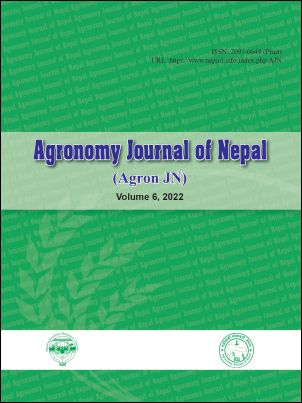Weed Control Efficiencies, Grain Yield and Economics as Affected by Seedbed Preparation and Weed Management Practices in Central Terai, Nepal
DOI:
https://doi.org/10.3126/ajn.v6i1.47967Keywords:
Direct seeded rice, benefit-cost ratio, seedbed, weed managementAbstract
Grain yield under dry direct seeded rice (DDSR) is primarily limited due to weeds. Therefore, a field experiment was conducted at Rampur, Chitwan during the monsoon season, of 2014. The treatments consisted of two methods of seedbed preparation in the main plot and six weed management methods in the sub-plot arranged in split plot design with four replications. Results revealed that the grain yield of dry-direct seeded rice did not vary due to seedbed preparation methods. However, weedy check treatments reduced more than 92.78 % of grain yield of dry-direct seeded rice compared to weed-free check. The herbicidal treatments were found to be superior for the benefit-cost ratio. Pendimethalin fb Bispyribac sodium recorded the highest net returns of NRs 68.73 thousand ha-1 and the benefit-cost ratio of 2.55. Sequential application of Pendimethalin followed by Bispyribac sodium was proved to be the most efficient weed management method for dry-direct seeded rice.
Downloads
Downloads
Published
How to Cite
Issue
Section
License
Copyright (c) 2022 Agronomy Society of Nepal (ASoN)

This work is licensed under a Creative Commons Attribution-NonCommercial 4.0 International License.
ASON permits for free use, distribution and reproduction in any medium if the original work is properly cited and not used for commercial purposes.




